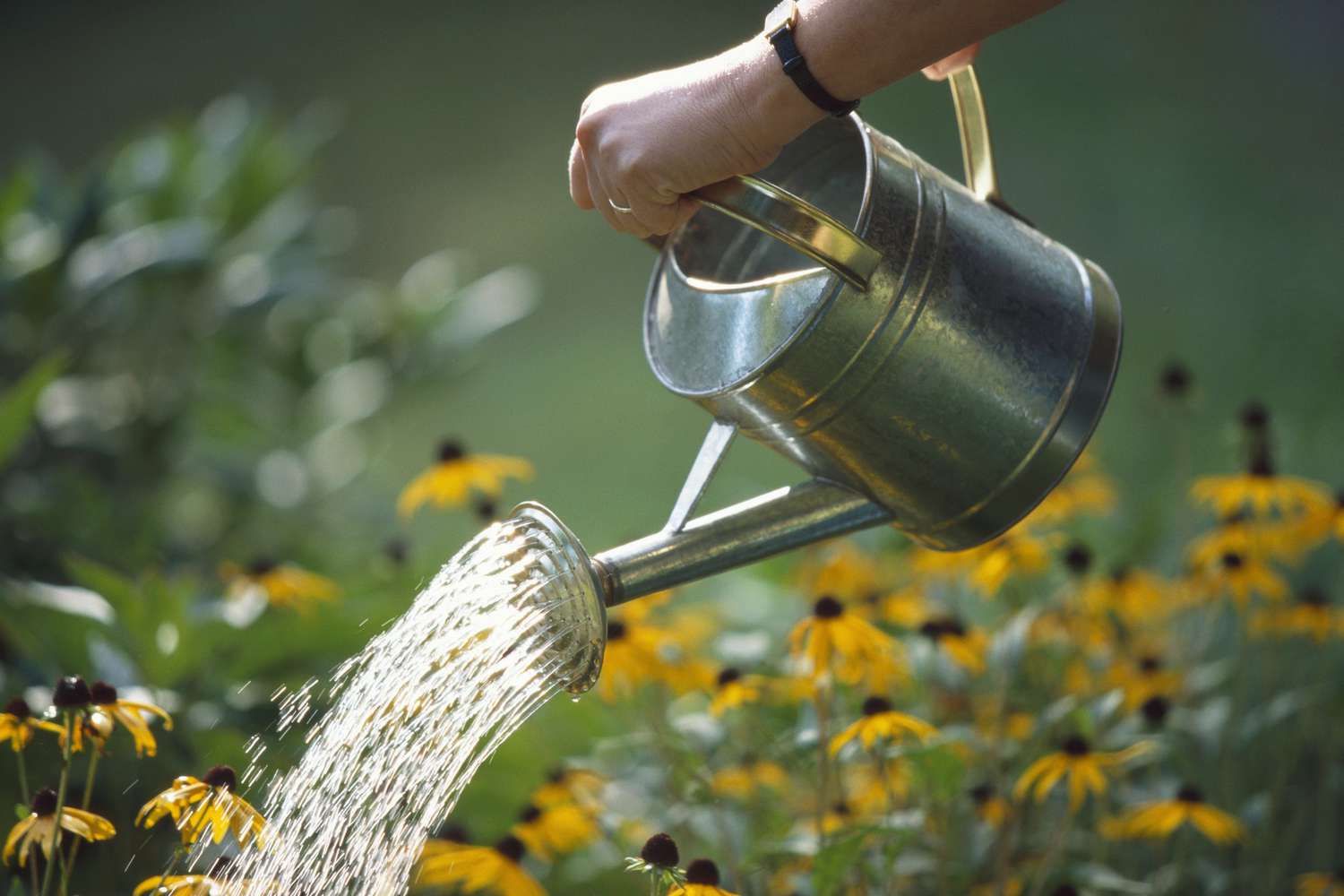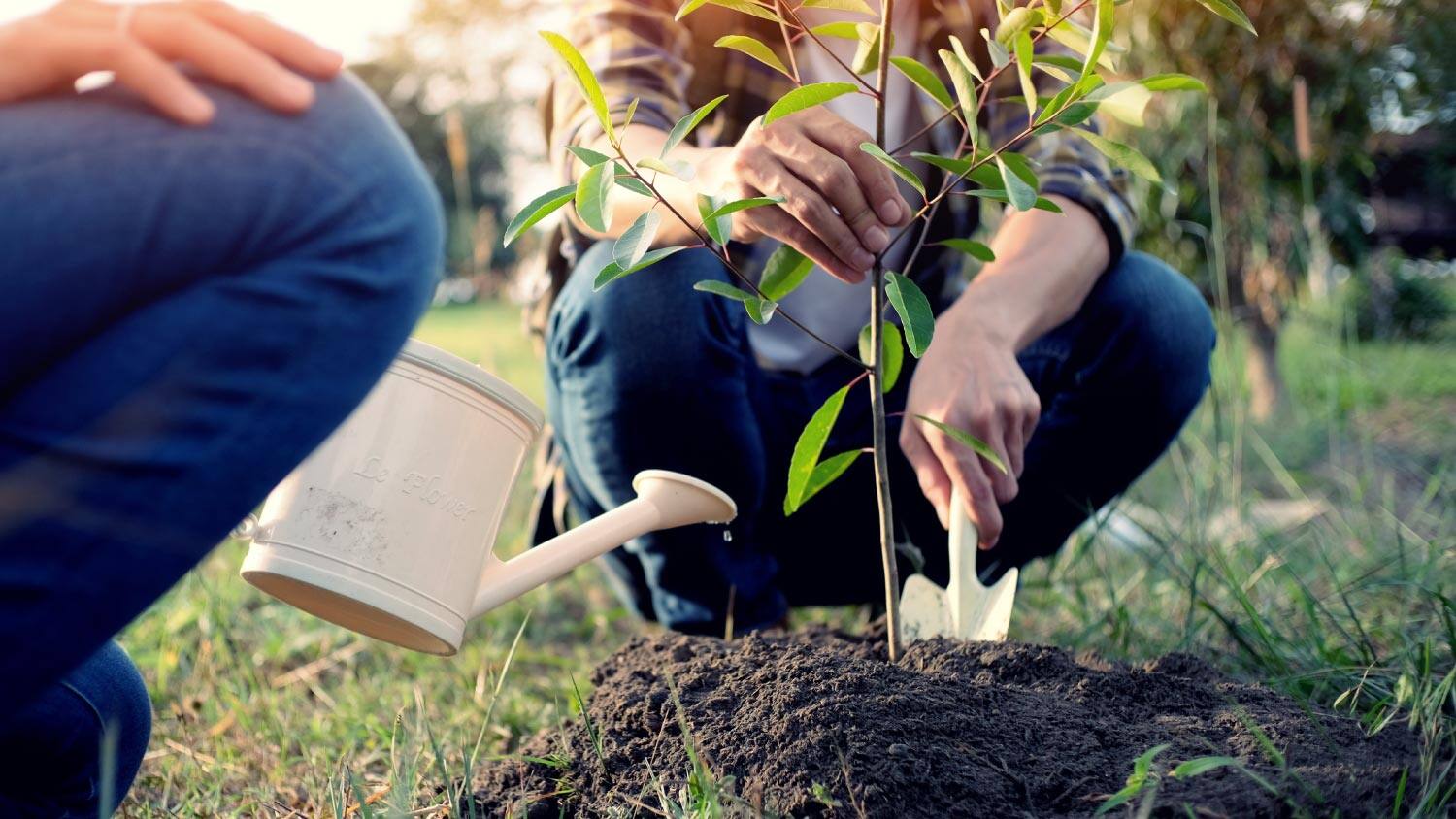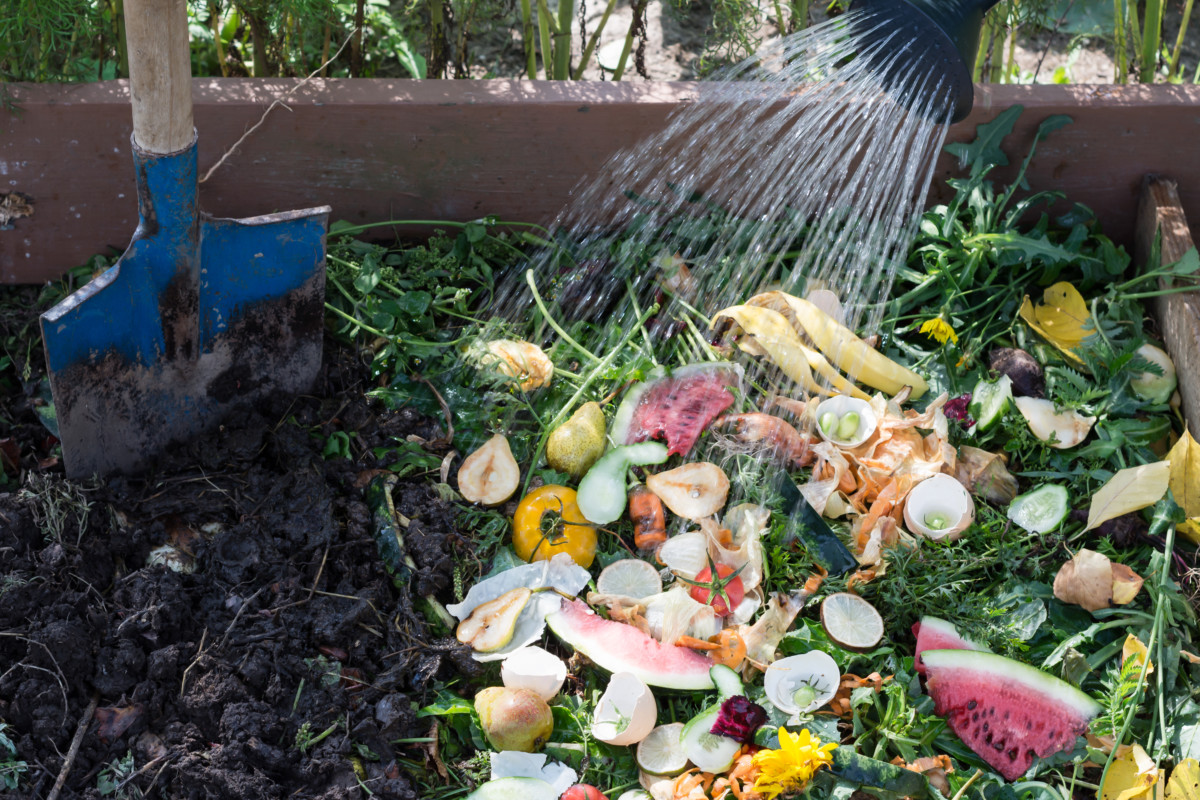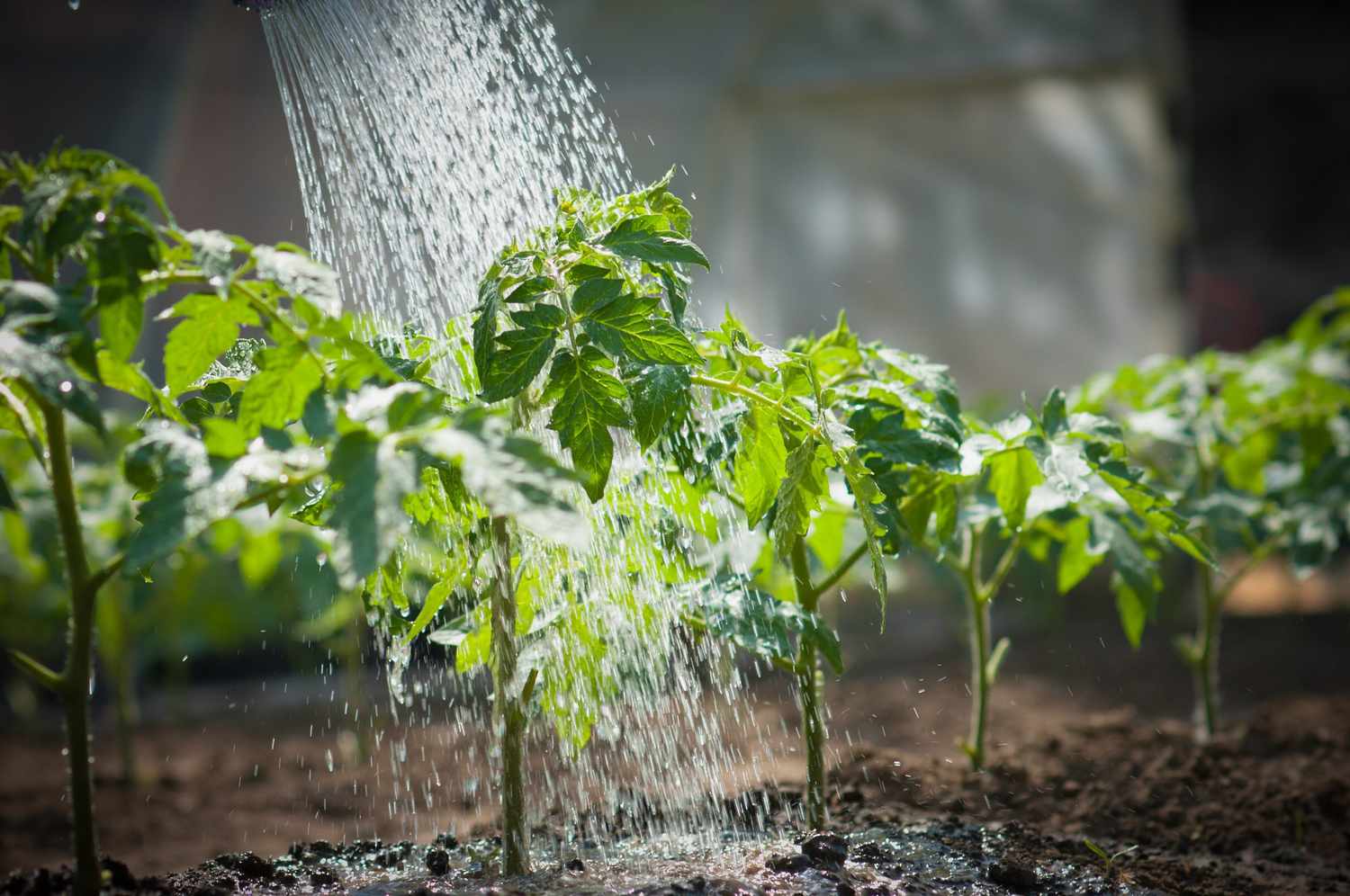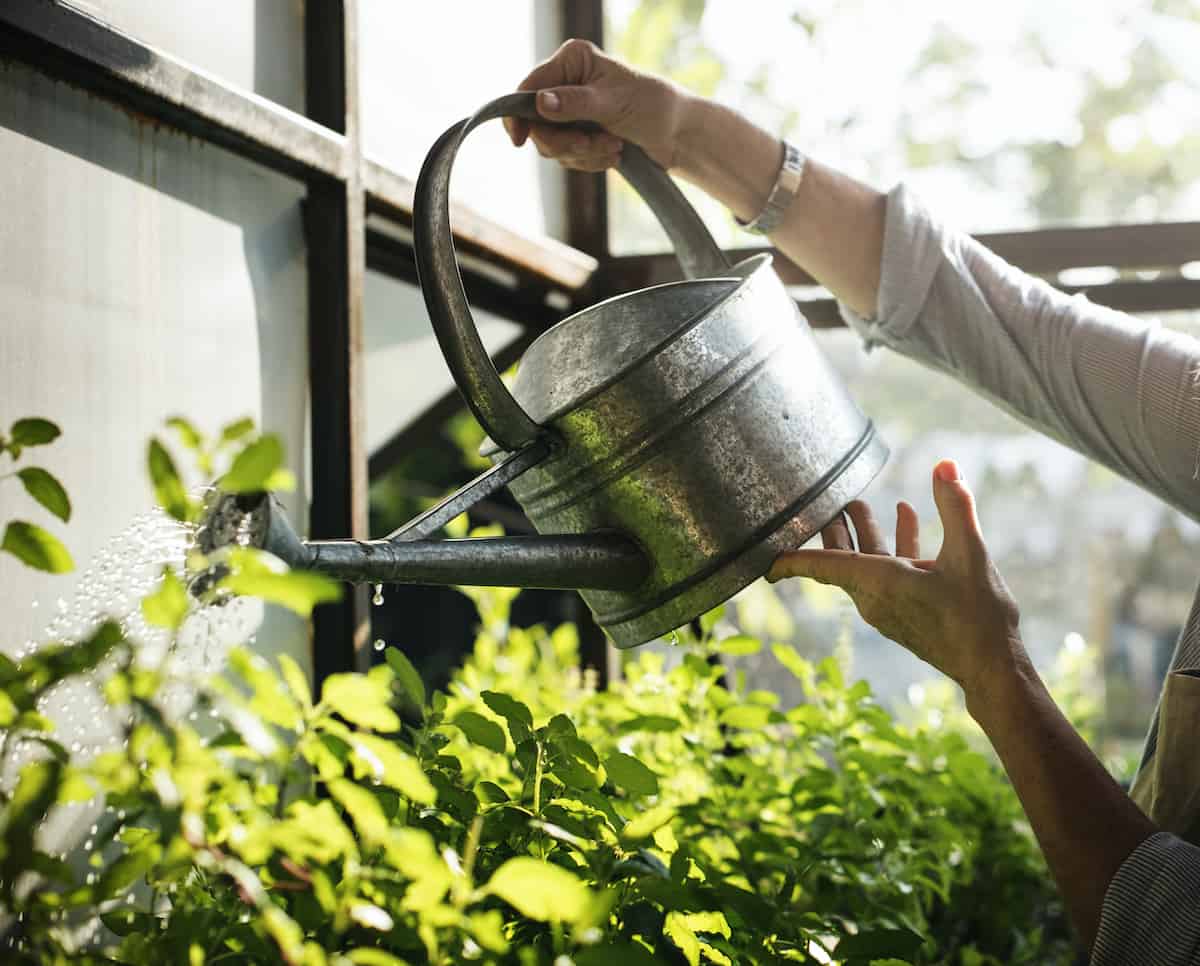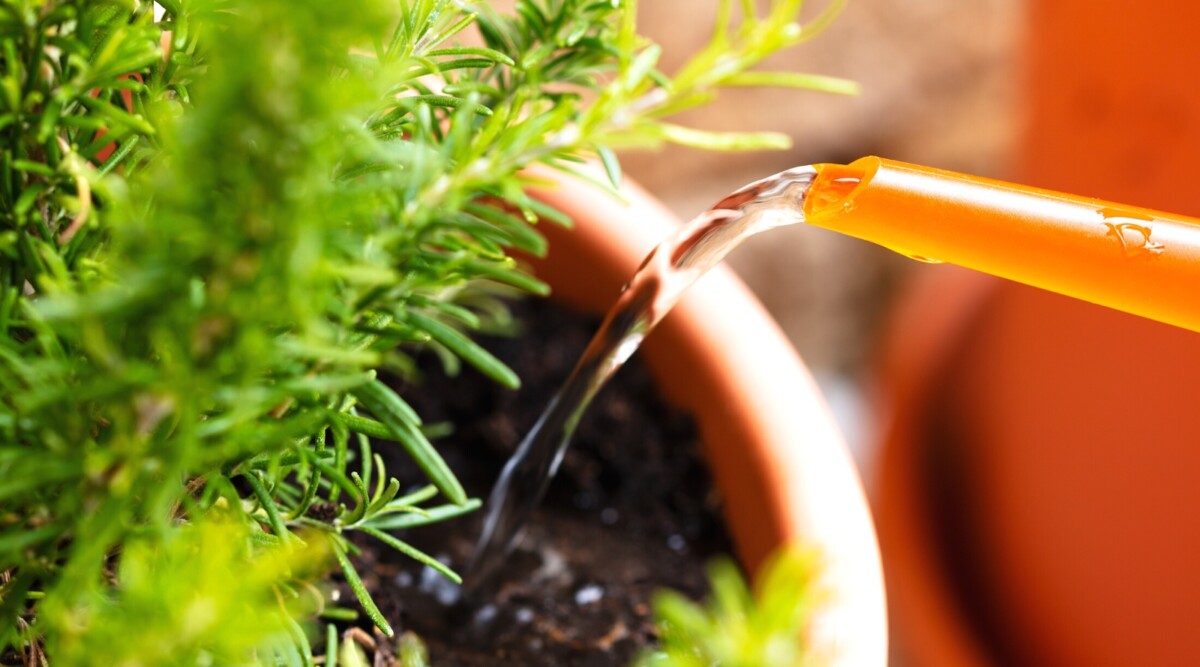Home>Types of Gardening>Ornamental Gardening>How Often To Water Trees After Planting
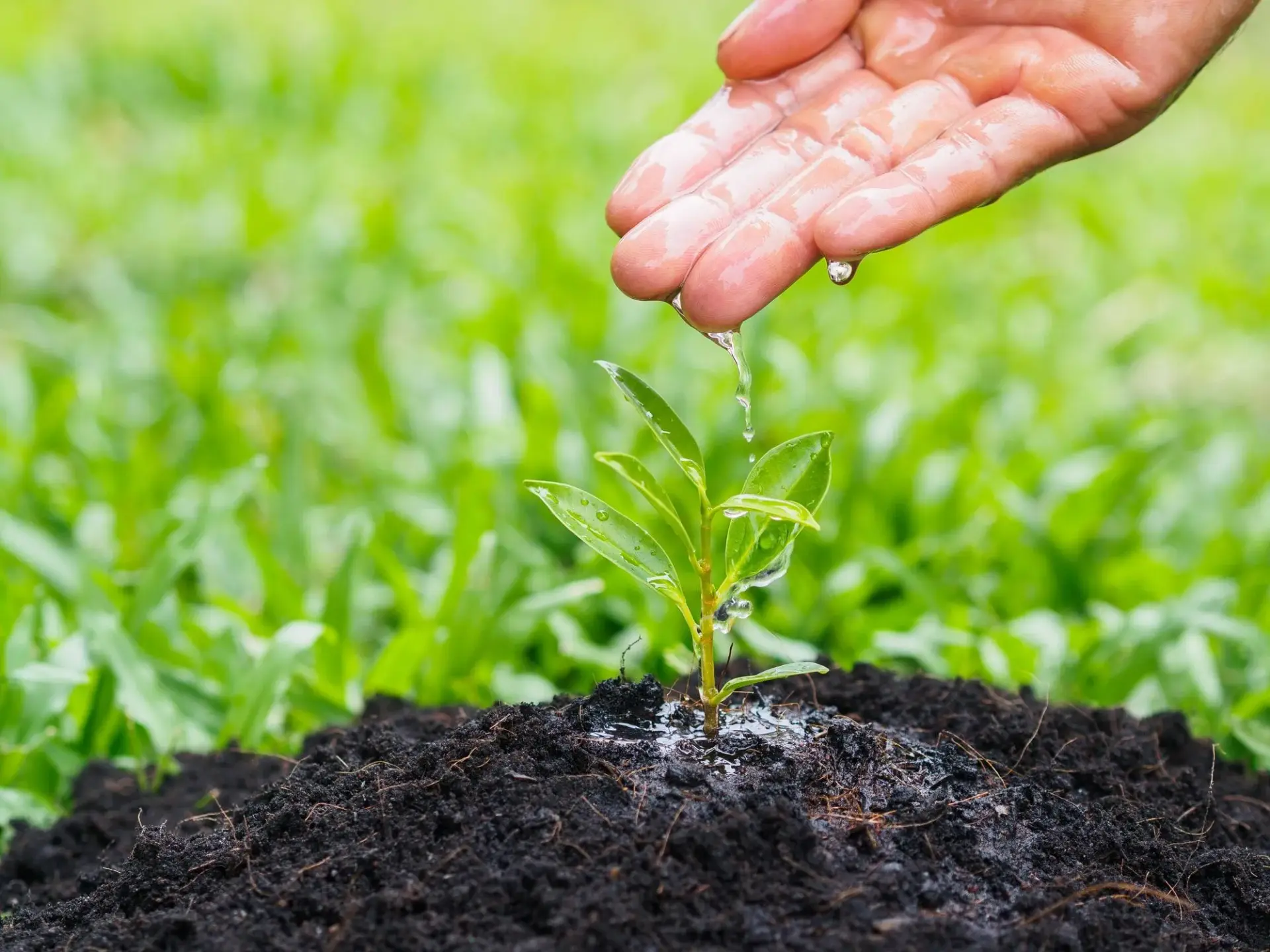

Ornamental Gardening
How Often To Water Trees After Planting
Published: August 26, 2023
Wondering how often to water trees after planting? Get expert tips for ornamental gardening and ensure your trees thrive with proper watering techniques.
(Many of the links in this article redirect to a specific reviewed product. Your purchase of these products through affiliate links helps to generate commission for Chicagolandgardening.com, at no extra cost. Learn more)
Table of Contents
Introduction
Ornamental gardening is a beloved hobby for many enthusiasts, providing not only a beautiful and visually appealing landscape but also a sense of peace and tranquility. One crucial aspect of maintaining a stunning garden is proper watering, especially when it comes to newly planted trees. Understanding how often to water trees after planting is essential for their survival and long-term health.
Watering frequency depends on various factors, such as weather conditions, tree species, soil type, and root establishment. Adequate hydration is crucial during the early stages of tree growth to ensure proper root development and establishment.
While it is impossible to provide an exact watering schedule applicable to all trees, understanding the general guidelines for watering can help gardeners navigate this essential aspect of tree care. This article will provide insights into how often to water trees after planting, considering different stages of tree growth, signs of overwatering and underwatering, and effective watering techniques.
Factors Affecting Watering Frequency
The watering frequency of newly planted trees can vary depending on several factors. By considering these factors, gardeners can determine the ideal watering schedule for their trees:
- Weather Conditions: The climate plays a significant role in watering frequency. Hot and dry weather conditions will require more frequent watering, while cooler and rainy periods may require less frequent watering.
- Tree Species: Different tree species have varying water needs. Some trees, such as willows and bald cypresses, thrive in wet environments and require more water, while others, like pines and junipers, are more drought-tolerant and require less frequent watering.
- Soil Type: The soil’s ability to retain moisture also influences watering frequency. Sandy soils drain water faster, requiring more frequent watering, while clay soils hold moisture for longer periods, necessitating less frequent watering.
- Root Establishment: Newly planted trees need time to establish their root systems. During this period, it is crucial to provide regular, deep watering to encourage root growth and help the tree anchor itself.
- Tree Age and Size: Younger trees with smaller root systems may require more frequent watering compared to mature trees with well-established roots. Adjusting the watering frequency based on tree age and size is essential.
- Time of Year: Watering frequency often fluctuates throughout the year. During the hot summer months, trees may require more water, while cooler seasons may require less watering.
By considering these factors and observing the tree’s specific needs, gardeners can determine the appropriate watering frequency for their newly planted trees. It is important to monitor the trees regularly and adjust the watering schedule as necessary to ensure they receive adequate hydration for healthy growth and development.
Initial Watering
The first watering session after planting is crucial for the survival and establishment of newly planted trees. This initial deep watering helps settle the soil, eliminate air pockets around the roots, and kickstart the root absorption process. Follow these guidelines for the initial watering:
- Provide a Deep Soaking: After planting the tree, give it a thorough soaking to ensure that the water reaches the entire root ball. Use a slow, steady stream of water to allow it to penetrate deeply into the soil.
- Water Quantity: Aim to provide around 10 gallons of water per inch of trunk diameter. For example, a tree with a 2-inch diameter trunk would require approximately 20 gallons of water.
- Water Distribution: To ensure even hydration, water in a circular pattern around the base of the tree, extending beyond the root ball’s outer edges.
- Watering Technique: Utilize a soaker hose or drip irrigation system to facilitate deep and uniform watering. This allows water to penetrate directly into the soil without overwhelming the tree’s roots.
- Timing: Water immediately after planting the tree, preferably in the early morning or late afternoon to minimize water loss due to evaporation.
- Repeat if Necessary: If the water quickly drains from the soil or if there are signs of settling, refill the planting hole with soil and water again until the soil is thoroughly moist.
During the initial watering, remember that newly planted trees need oxygen as well. Avoid overwatering, as excessive moisture can suffocate the roots and lead to root rot. Striking the right balance is vital for the tree’s health.
By providing an initial deep soak immediately after planting, gardeners can ensure that the newly planted trees have the best chance to establish themselves and thrive in their new environment.
First Month After Planting
The first month after planting is a critical period for newly planted trees. During this time, the trees are adjusting to their new surroundings and establishing their root systems. Proper watering is essential to promote healthy growth and minimize stress. Follow these guidelines for watering during the first month:
- Frequency: Water newly planted trees every 3-5 days during the first month, depending on the weather conditions. Pay attention to signs of water stress, such as wilting or drooping leaves, and adjust the watering schedule accordingly.
- Water Quantity: Provide enough water to moisten the soil to a depth of 6-8 inches. This ensures that the water reaches the young roots and encourages downward root growth.
- Deep Watering: To promote deep root development, water slowly and deeply. This encourages the roots to grow downward in search of moisture, making the trees more resilient in the long run.
- Morning Watering: Water in the early morning to allow excess moisture on the foliage to dry before nightfall. Wet foliage during the night can lead to fungal diseases.
- Monitor Soil Moisture: Regularly check the moisture level of the soil by inserting a finger or a soil moisture meter into the ground. If the top 2-3 inches of soil are dry, it’s time to water again.
- Avoid Shallow Watering: Ensure that the water penetrates deeply into the soil rather than just wetting the surface. Shallow watering can result in shallow root development, making the tree more susceptible to drought stress.
It is important to strike a balance and avoid both overwatering and underwatering during the first month. Overwatering can suffocate the roots and lead to root rot, while underwatering can cause stress and hinder proper root growth. Monitor the trees closely and adjust the watering schedule as needed based on the tree’s specific requirements and environmental conditions.
By providing adequate moisture during the first month after planting, gardeners can help their newly planted trees establish a strong foundation for healthy growth and long-term vitality.
First Year After Planting
The first year after planting is a critical period for the establishment and growth of newly planted trees. During this time, careful attention to watering can significantly impact the tree’s long-term health. Follow these guidelines for watering during the first year:
- Watering Frequency: Water newly planted trees deeply once a week during the first year. Adjust the frequency based on weather conditions; increase watering during hot and dry periods, and decrease during cooler and rainy seasons.
- Water Quantity: Provide enough water to moisten the soil to a depth of 12-18 inches. This allows the water to reach the deeper roots where it is needed most.
- Deep Watering: Continue to practice deep watering to encourage deep root growth. This helps the tree become more resilient to drought and better equipped to access water sources in the future.
- Monitor Soil Moisture: Regularly check the moisture level of the soil by inserting a finger or a soil moisture meter into the ground. If the top few inches of soil are dry, it’s time to water again.
- Watering Zone: Pay attention to the tree’s root zone, which extends beyond the canopy. Make sure to water the area where the majority of the roots are located, rather than just the trunk base. This encourages widespread root growth.
- Mulching: Apply a layer of organic mulch around the base of the tree. This helps retain moisture, reduces weed competition, and regulates soil temperature. However, ensure the mulch is not piled against the trunk to prevent rot.
- Observation: Observe the tree for signs of stress or over/underwatering, such as wilting, yellowing leaves, or waterlogged soil. Adjust the watering schedule accordingly to meet the tree’s needs.
Throughout the first year, gradual reduction in watering frequency can encourage the tree to develop deeper roots and become more self-reliant. However, it is important to continue monitoring the tree’s water needs and adjust watering as necessary.
By providing consistent and appropriate watering during the first year, gardeners can help their newly planted trees establish a strong root system and ensure their long-term health and resilience.
Second Year and Beyond
After the first year, newly planted trees have established their root systems and become more self-sufficient. However, proper watering is still essential to support their ongoing growth and health. Follow these guidelines for watering during the second year and beyond:
- Watering Frequency: Water mature trees deeply every 10-14 days, or as needed, during the growing season. Adjust the watering frequency based on weather conditions and the tree’s specific water needs.
- Water Quantity: Provide enough water to moisten the soil to a depth of at least 12 inches. This encourages deep root growth and helps the tree access available moisture sources in the soil.
- Monitor Soil Moisture: Regularly check the moisture level of the soil. If the top few inches of soil are dry, it’s time to water again. However, be cautious not to overwater, as trees also benefit from occasional dry periods to stimulate root growth.
- Watering Zone: Continue to water the tree’s root zone, which extends beyond the canopy. Properly hydrating the most significant portion of the root system ensures the tree receives the necessary water for healthy growth and development.
- Rainfall Consideration: Take into account natural rainfall when determining the watering frequency. Reduce watering if there has been adequate rainfall, but be cautious during dry spells or drought conditions and ensure the tree receives enough moisture for sustained health.
- Adjustment for Drought-Tolerant Trees: For trees known to be more tolerant of drought, such as cacti or certain succulents, adjust the watering frequency accordingly. These types of trees have adapted to thrive in arid conditions and may require less frequent watering.
- Observe the Tree: Continuously monitor the tree for any signs of stress, such as wilting or yellowing leaves. These may indicate the need for more frequent watering or additional attention to the tree’s overall health.
Remember that every tree is unique, and its watering needs may vary based on factors like species, local climate, and soil conditions. It is essential to understand the specific requirements of your trees and adjust the watering schedule accordingly.
By providing appropriate and consistent watering, gardeners can ensure the continued vitality and growth of their trees as they mature and become valuable assets to the landscape for years to come.
Signs of Overwatering
While proper watering is crucial for the health of trees, overwatering can be just as damaging. Understanding the signs of overwatering can help gardeners avoid this common mistake and prevent potential harm to their trees. Look out for the following signs of overwatering:
- Wilting: Surprisingly, wilting can occur even when a tree is getting too much water. If the soil is consistently saturated, it can suffocate the roots and prevent them from absorbing oxygen and nutrients, leading to wilting.
- Yellowing Leaves: If the leaves of a tree turn yellow, especially in the absence of other issues like drought or nutrient deficiency, it could be a sign of overwatering. Excess moisture causes roots to become weak and susceptible to diseases, leading to leaf discoloration.
- Fungus and Root Rot: Too much water can create an ideal environment for fungal growth in the soil. Look for signs of fungus, mold, or mushy roots, which are indicative of excessive moisture and potential root rot.
- Stunted Growth: Overwatering can hinder the tree’s ability to develop a strong root system. As a result, the tree may exhibit slow or stunted growth, with smaller leaves, sparse foliage, and overall poor vigor.
- Waterlogged Soil: If the soil around the tree feels constantly soggy, even long after watering, it may indicate overwatering. Excessive moisture prevents proper drainage and can cause the roots to sit in water for extended periods.
- Foul Odor: In severe cases of overwatering, a foul smell may emanate from the soil due to the presence of anaerobic bacteria. This rotten smell is a clear indication of waterlogged soil and potential root issues.
If these signs are observed, it is important to adjust the watering schedule and allow the soil to dry out between waterings. Proper drainage and aeration of the soil are essential for the health of tree roots.
Remember, watering should be done based on the specific needs of the tree and environmental conditions. Monitoring the signs of overwatering can help ensure that trees receive the appropriate amount of moisture for optimal growth and vigor.
Signs of Underwatering
Just as overwatering can be detrimental to trees, underwatering can also have adverse effects on their health and growth. Recognizing the signs of underwatering is crucial for gardeners to take the necessary steps to provide adequate hydration to their trees. Look out for the following signs of underwatering:
- Wilting: One of the primary signs of underwatering is wilting. When a tree doesn’t receive enough water, it tries to conserve moisture by wilting its leaves. This can happen even if the soil is dry.
- Yellowing or Browning Leaves: Insufficient water supply can cause leaves to turn yellow or brown and become brittle. Lack of hydration can lead to leaf discoloration and ultimately result in leaf drop.
- Cracked or Dry Soil: Dry soil is a telltale sign of underwatering. When the soil lacks moisture, it can become cracked or dry to the touch. Check the soil around the tree’s root zone for signs of dehydration.
- Leaf Curling: In an attempt to reduce moisture loss, some trees curl their leaves when they are not adequately hydrated. This is a defense mechanism to conserve water and prevent further water loss through the leaf surface.
- Stunted Growth: Insufficient water can hamper a tree’s growth, causing it to exhibit slow or stunted growth. Lack of necessary hydration restricts the tree’s ability to absorb nutrients and undergo proper photosynthesis.
- Increased Pest and Disease Susceptibility: Underwatered trees are more prone to pests and diseases. Weak and stressed trees are less able to fend off attacks from harmful insects or fight off infections.
If these signs are observed, it is important to increase the frequency and amount of watering. Ensure that the soil is adequately moistened to provide the tree with sufficient hydration. Be mindful of the specific watering needs of the tree species and adjust the watering schedule as needed based on environmental conditions.
Remember, proper watering is essential for the overall health and vitality of trees. Monitoring the signs of underwatering can help ensure that trees receive the necessary amount of water for optimal growth and resilience.
Watering Techniques
Adopting proper watering techniques is crucial for ensuring the effective and efficient hydration of trees. By employing these techniques, gardeners can optimize water absorption and minimize water loss. Consider the following watering techniques:
- Deep Watering: Water deeply and thoroughly to encourage deep root growth. This entails providing enough water to penetrate the soil to a significant depth, ensuring the roots receive adequate hydration.
- Water at the Base: Direct the water towards the base of the tree, where the roots are concentrated. Avoid watering the trunk or foliage, as this can lead to moisture-related issues and encourages the growth of fungi or molds.
- Soaker Hoses or Drip Irrigation: Utilize soaker hoses or drip irrigation systems to deliver water directly to the root zone. These methods provide a slow and steady flow of water, allowing it to penetrate the soil evenly and reduce water evaporation.
- Watering Schedule: Develop a regular watering schedule based on the specific needs of the tree and the prevailing weather conditions. Consider factors such as tree species, soil type, and local climate when determining the frequency and amount of watering.
- Mulching: Apply a layer of organic mulch around the base of the tree, leaving a gap around the trunk. Mulch helps to retain soil moisture, regulate soil temperature, and suppress weed growth, reducing competition for water.
- Water in the Morning: Watering in the early morning allows the tree to absorb and utilize the moisture effectively throughout the day. It also reduces the risk of fungal diseases by allowing the foliage to dry before nighttime.
- Avoid Overwatering: Overwatering can lead to waterlogged soil, root rot, and other moisture-related issues. Take care to find the right balance between providing enough water and avoiding excessive moisture.
- Observe and Adjust: Regularly observe the tree for any signs of overwatering or underwatering. Monitor the soil moisture levels, evaluate the tree’s growth and appearance, and adjust the watering techniques as necessary.
By implementing these watering techniques, gardeners can ensure that trees receive the proper amount of hydration in a manner that minimizes water waste and maximizes absorption. This promotes healthy growth, improves the tree’s resilience to environmental stressors, and supports the overall well-being of the landscape.
Conclusion
Proper watering is a fundamental aspect of maintaining the health and vitality of newly planted trees. By understanding the factors affecting watering frequency and following the appropriate guidelines, gardeners can ensure that their trees receive the optimal amount of hydration throughout their growth journey.
From the initial watering immediately after planting to the ongoing care in subsequent years, it is important to strike a balance between providing enough water for growth and avoiding overwatering, which can lead to root issues and other related problems.
Monitoring the signs of both overwatering and underwatering is crucial in determining the tree’s watering needs. Adjustments to the watering schedule should be made based on specific tree species, soil conditions, weather patterns, and other environmental factors.
Employing proper watering techniques, such as deep watering, directing water to the root zone, utilizing soaker hoses or drip irrigation, and mulching, can further optimize water absorption, reduce water waste, and promote a healthy root system.
Remember that every tree is unique, so it is important to closely observe and understand your tree’s specific requirements. Regular monitoring, adjusting watering practices as needed, and maintaining a balanced approach to watering will contribute to the long-term success and beauty of your ornamental garden.
By investing the time and effort into proper watering practices, gardeners can not only enjoy the visual splendor of their ornamental trees but also contribute to their longevity and contribute to a thriving garden ecosystem.

